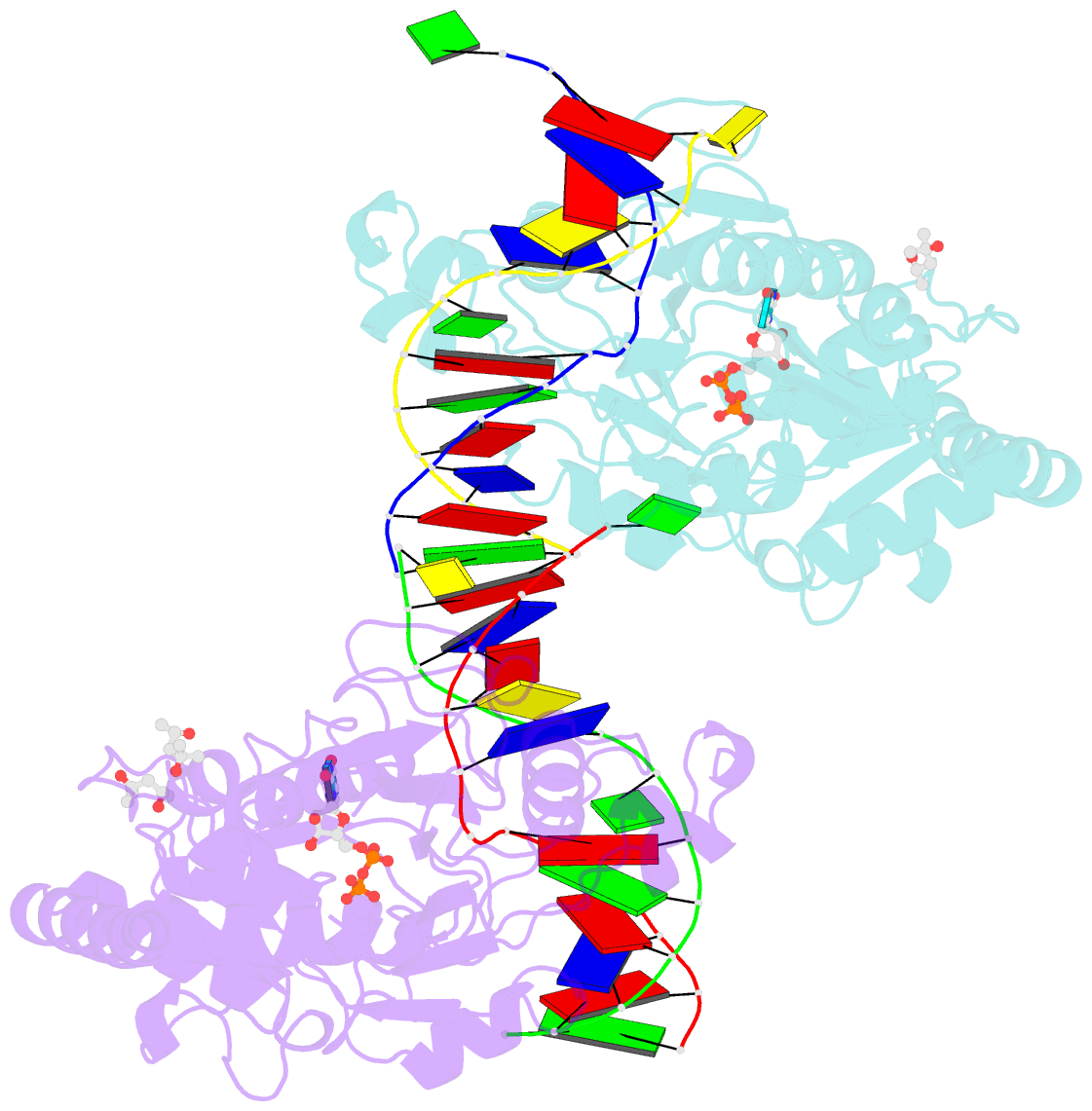Summary information and primary citation
- PDB-id
- 1ixy; SNAP-derived features in text and JSON formats;
DNAproDB
- Class
- transferase-DNA
- Method
- X-ray (2.5 Å)
- Summary
- Ternary complex of t4 phage bgt with udp and a 13 mer DNA duplex
- Reference
- Lariviere L, Morera S (2002): "A Base-flipping Mechanism for the T4 Phage beta-Glucosyltransferase and Identification of a
Transition-state Analog." J.Mol.Biol., 324, 483-490. doi: 10.1016/S0022-2836(02)01091-4.
- Abstract
- T4 phage beta-glucosyltransferase (BGT) modifies T4 DNA. We crystallized BGT with UDP-glucose and a 13mer DNA fragment containing an abasic site. We obtained two crystal structures of a ternary complex BGT-UDP-DNA at 1.8A and 2.5A resolution, one with a Tris molecule and the other with a metal ion at the active site. Both structures reveal a large distortion in the bound DNA. BGT flips the deoxyribose moiety at the abasic site to an extra-helical position and induces a 40 degrees bend in the DNA with a marked widening of the major groove. The Tris molecule mimics the glucose moiety in its transition state. The base-flipping mechanism, which has so far been observed only for glycosylases, methyltransferases and endonucleases, is now reported for a glucosyltransferase. BGT is unique in binding and inserting a loop into the DNA duplex through the major groove only. Furthermore, BGT compresses the backbone DNA one base further than the target base on the 3'-side.





